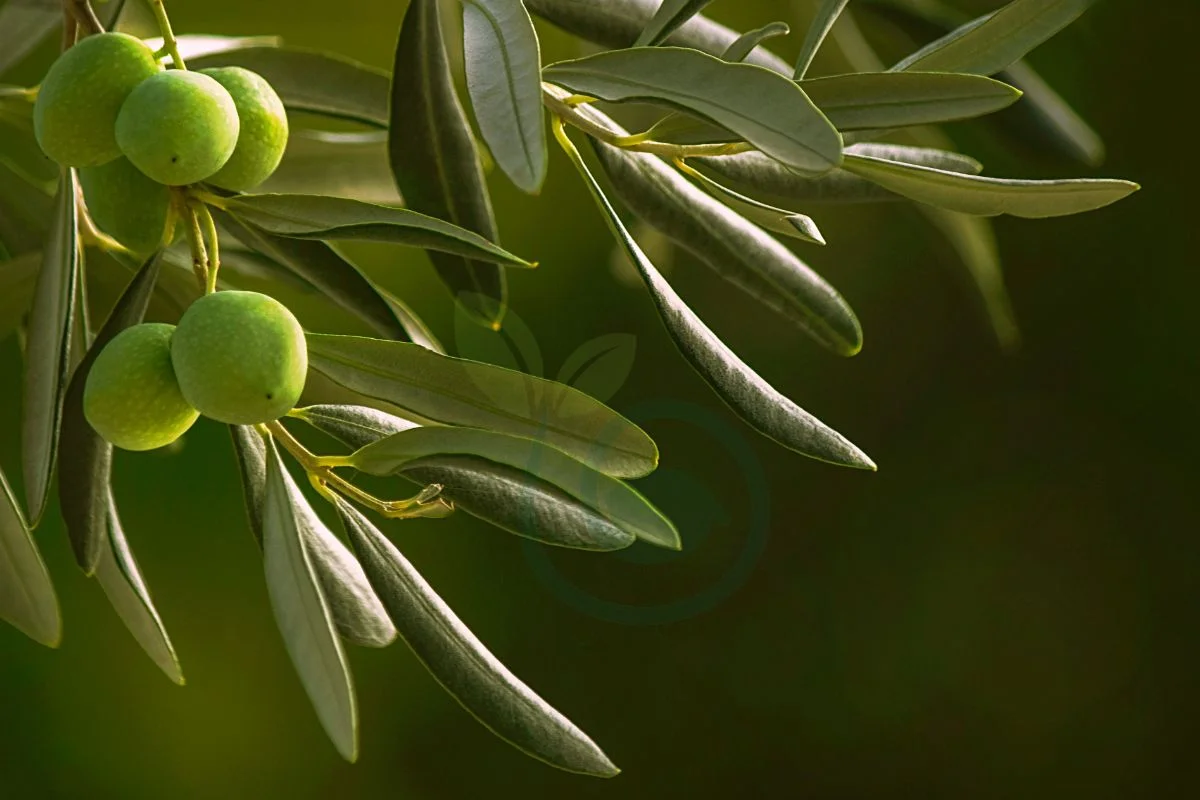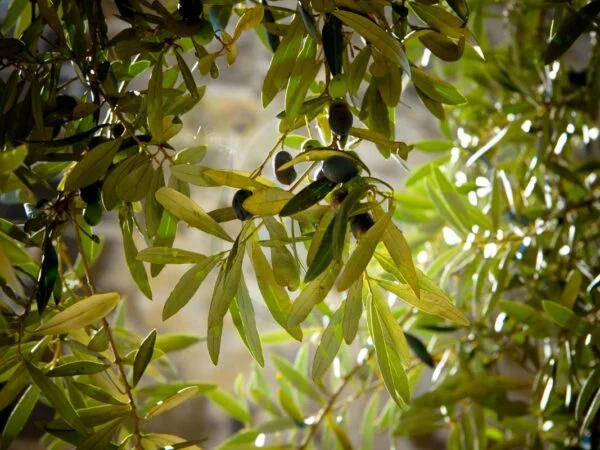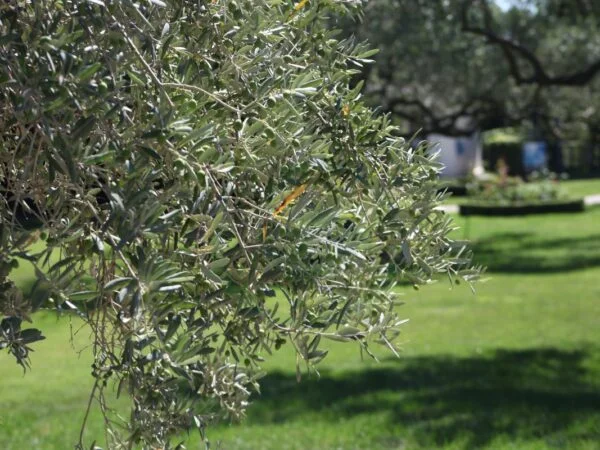
Ever wondered about the age of the ancient olive trees in Gethsemane? These iconic trees are believed to have witnessed centuries of history, standing as silent witnesses to the passage of time. The age-old question "How old are the olive trees in Gethsemane?" continues to captivate both historians and nature enthusiasts alike.
From biblical references to radiocarbon dating, we'll explore the various approaches used to estimate the age of these venerable olive trees. Join us on this journey as we unravel the myth surrounding these ancient guardians of an important historical site. Get ready for a captivating exploration that sheds light on the remarkable resilience and significance of these timeless arboreal treasures.
Key Takeaways
- The age of olive trees in Gethsemane can be determined through various methods, including ring counting, carbon dating, and historical records.
- The olive trees in Gethsemane hold significant cultural, religious, and historical importance, attracting visitors and pilgrims from around the world.
- The characteristics of olive wood, such as its density and unique grain patterns, contribute to its value for artisanal and religious purposes.
- Bio-archaeological evidence, including ancient olive pollen and charred olive wood, provides insights into the historical presence of olive trees in the region.
- Dating the age of olive trees presents challenges due to their ability to regenerate from their roots, making it difficult to accurately determine their true age.
- Relict olive trees contribute to the preservation of historical landscapes and biodiversity in the region.
Age Determination
Dendrochronology
Dendrochronology, the study of tree rings to determine age, provides a precise method for dating wooden structures and artifacts. The width and pattern of tree rings offer valuable historical information. The analysis of olive trees in Gethsemane using dendrochronology revealed that some are over 900 years old. This method is particularly effective because it allows researchers to accurately determine the exact year when certain environmental events occurred.
Radiocarbon Dating Radiocarbon dating measures the decay of carbon isotopes in organic material and is effective for dating materials up to 50,000 years old. However, due to their longevity, olive trees pose a challenge for radiocarbon dating as they can live for thousands of years. Consequently, this method may not be as applicable when determining the precise age of ancient olive trees in Gethsemane.
Precision Analysis Precision analysis involves meticulous examination of tree rings using advanced technology to enhance accuracy in estimating age. By meticulously studying each ring's width and pattern, researchers gain detailed insights into environmental conditions during each year's growth cycle. This precision analysis has been instrumental in uncovering crucial details about the growth history and age determination of ancient olive trees.
Tree-ring dating relies on patterns in annual growth rings where each ring represents a year of growth forming a chronological record. In Gethsemane's case, this method has helped experts determine that some olive trees have been growing since before significant historical events, yeshua, took place centuries ago.
Olive Trees in Gethsemane
Historical Significance
Olive trees are deeply rooted in history and culture, symbolizing peace, prosperity, and religious significance. Throughout ancient civilizations, olive trees were revered for their practical uses and symbolic value. They have been associated with peace and spirituality across various societies.
The cultural importance of olive trees extends to Mediterranean traditions, where they have played a vital role for thousands of years. These enduring symbols represent fertility, endurance, and peace within many cultures. The products derived from these trees—such as oil and wood—have been integral to culinary practices and artisanal traditions.
Ancient Presence Olive trees have thrived in the Mediterranean region for millennia, intertwining with ancient agricultural practices and trade routes. Their presence has sustained communities through diverse historical periods.
Olive Wood Characteristics
Timber Structure
The olive tree has been revered for its timber, which has been used in construction and artistry. The ancient olive trees' timber is highly prized due to its durability and unique grain patterns. This reflects the slow growth of these trees, resulting in a dense and robust wood that is ideal for various applications. For instance, this type of timber has been utilized in crafting furniture, flooring, and decorative items.
Due to its stability and resistance to decay, ancient olive wood was favored for creating wooden panel paintings. This material's ability to withstand the test of time made it ideal for artistic use as it ensured the longevity of artworks crafted from it. Many renowned artworks throughout history were created using this durable material, showcasing both the beauty and longevity associated with ancient olive wood.
Wooden Panel Painting
The structural integrity of ancient olive trees' timber makes it suitable for a wide range of artistic endeavors such as sculpting intricate figurines or carving ornate decorations. Its strength allows artisans to create delicate details without compromising on durability or quality.
Bio-archaeological Evidence
Bio-archaeological evidence provides valuable insights. Traditional cultivation methods, including efficient irrigation systems, have sustained olive groves across centuries. The intricate knowledge of irrigation techniques reflects a long-standing connection to the land.
Archaeological excavations and scientific studies have revealed that medieval Europe witnessed extensive cultivation of olive trees in certain regions. Monasteries played a significant role in preserving the knowledge of olive cultivation during this period. Furthermore, it is known that olive oil production was central to medieval European economies.
The traditional olive tree irrigation methods used for cultivating these ancient trees provide important clues about their age. These efficient irrigation systems have contributed to sustaining the longevity of olive groves over generations. For example, by studying the historical use of terracotta pipes for watering and nourishing these trees, researchers can gain insights into their age and resilience.
Moreover, examining how medieval Europe practiced olive tree cultivation sheds light on the potential age of the trees in Gethsemane. The active involvement of monasteries in preserving knowledge related to olives indicates a deep-rooted tradition that has been passed down through centuries. By understanding how this practice evolved over time and spread across different regions within Europe, researchers can draw parallels with similar practices elsewhere.
Dating Challenges
Technological Features
Advanced technology plays a crucial role in determining the age of the ancient olive trees in Gethsemane. High-resolution imaging techniques have revolutionized the study of these remarkable specimens. By utilizing advanced technology, researchers are able to analyze the intricate growth patterns found within the tree rings of these ancient olive trees. This detailed analysis enhances our understanding of their age and provides valuable insights into their historical significance.
For example, specialized imaging equipment allows scientists to capture high-definition images of the tree rings, revealing subtle variations that indicate periods of growth and environmental conditions. These technological advancements enable researchers to delve deeper into the history and growth patterns of these ancient olive trees, shedding light on their estimated age with greater accuracy.
Cutting-edge technology has also facilitated interdisciplinary collaboration between archaeologists, botanists, and dendrochronologists (scientists who study tree rings). This collaborative approach harnesses various technological tools and expertise to unravel the mysteries surrounding these ancient specimens' ages.
Estimation Difficulties
Estimating the age of centuries-old olive trees presents unique challenges due to their exceptional longevity. Factors such as irregular growth patterns pose significant obstacles when attempting to accurately determine their age. The complex nature of these factors requires specialized expertise and methods for overcoming estimation difficulties.
Considerable expertise is essential when interpreting anomalies or irregularities within tree ring data from ancient olive trees. Dendrochronologists rely on extensive knowledge gained through years of experience studying similar specimens in diverse environments to navigate through these complexities successfully.
Furthermore, overcoming estimation difficulties involves employing innovative methodologies tailored specifically for analyzing ancient olive trees' growth patterns. By combining traditional dendrochronology techniques with modern advancements in image processing and data analysis, researchers can develop more accurate estimations regarding the ages of these extraordinary living relics.
Relict Olive Trees
Negev Desert
The olive trees in Gethsemane, particularly those found in the Negev Desert, are some of the oldest known specimens. The harsh conditions of the desert have played a significant role in shaping these ancient trees over centuries. Despite the arid environment, these olive trees have thrived and become resilient, standing as a testament to their ability to adapt and survive.
These olive trees are remarkable not only for their age but also for their ability to endure and flourish in such an unforgiving landscape. Their presence is a living historical record of perseverance and adaptation, offering invaluable insights into how nature can thrive under extreme circumstances. For example, some of these ancient olive trees may exhibit unique characteristics such as twisted trunks or unusually shaped branches due to years of exposure to the desert's challenging conditions.
Veteran Trees
The veteran olive trees found in Gethsemane represent centuries of history within their weathered trunks and sprawling branches. These venerable trees hold cultural significance within their communities, often revered as living landmarks that embody local heritage and traditions. Preserving these veteran olive trees is crucial not only for maintaining historical continuity but also for safeguarding the cultural identity tied to them.
In many cases, these olive trees serve as symbols of resilience and endurance, inspiring awe and respect among those who encounter them. Communities often take pride in nurturing and protecting these living relics that have withstood countless generations' worth of trials and tribulations. By safeguarding these veteran olive trees, communities ensure that future generations can continue to marvel at their enduring beauty while connecting with the rich history they represent.
World's Oldest Trees
Gethsemane Among Oldest
Gethsemane, a place of profound religious and historical significance, is home to some of the oldest documented olive trees globally. These iconic trees stand as living witnesses to centuries of human history and spiritual devotion. The ancient olive grove in Gethsemane offers visitors a tangible link to bygone eras, fostering a deep sense of connection with the past.
The enduring presence of these time-honored trees adds layers to their importance, transcending mere botanical fascination. As visitors walk among these gnarled trunks and sprawling branches, they are transported back in time, experiencing an almost mystical connection with antiquity. The sight of these ancient olives evokes contemplation about the countless generations that have revered this sacred land.
The relict olive trees' historical and religious significance enriches their age-old allure, making them not just biological marvels but also cultural treasures embodying resilience across epochs.
Demystifying Ages
Unraveling the ages of these venerable olive trees demands collaborative efforts from diverse fields such as dendrochronology, archaeology, and history. Through interdisciplinary research endeavors, experts strive to peel back the layers shrouding these ancient arboreal wonders.
Dendrochronologists play a pivotal role in determining the precise ages of relict olive trees, employing intricate methods like tree-ring dating. By analyzing growth rings within sections of tree trunks or branches carefully, researchers can unveil invaluable insights into each tree's age with remarkable accuracy.
Moreover, collaboration between archaeologists and historians further contributes to shedding light on these storied timelines. Their combined expertise helps contextualize the ages of ancient olives within broader historical narratives—clarifying how events throughout millennia have shaped both human societies and natural environments.
This multidisciplinary approach not only demystifies the ages of ancient olive trees but also unravels historical mysteries surrounding their existence—enriching our understanding of humanity's enduring relationship with nature over vast stretches of time.
Historical Landscapes
Quercus Age Estimation
Accurately estimating the age of olive trees in Gethsemane involves unique challenges compared to other tree species like Quercus (oak). Differentiating between annual growth rings in Quercus demands specialized expertise due to their complex patterns. The study of Quercus age estimation not only requires scientific knowledge but also offers valuable insights into forest ecology, contributing to our understanding of woodland ecosystems and biodiversity.
On the other hand, olive trees' age estimation relies on different methods, such as carbon dating and historical records, owing to their distinct growth patterns. Unlike Quercus, olives' annual ring formation is less uniform and can be affected by various environmental factors. For instance, severe weather conditions or periods of drought may impact the growth rate of olive trees, making it challenging to determine their precise age using traditional dendrochronology methods.
Despite these challenges, accurately determining the age of ancient olive trees in Gethsemane is crucial for preserving their historical significance and cultural heritage. By employing a combination of scientific techniques and historical context analysis, researchers can gain a deeper understanding of these historic landscapes and contribute to global efforts aimed at safeguarding natural treasures.
Historic Significance
Historically, ancient olive trees hold immense reverence for their enduring presence and symbolic importance across nations. These iconic groves are not merely clusters of trees; they embody tangible links to past civilizations' legacies that have withstood centuries—bearing witness to countless generations that have come before us. Acknowledging the historic significance of these sacred sites enriches our appreciation for cultural heritage while fostering an enduring connection between people from diverse backgrounds around the world.
The preservation of historic olive groves plays a pivotal role in maintaining these living testaments to human history intact for future generations—a testament that transcends geographical boundaries and unites individuals worldwide through shared admiration for nature's resilience amidst changing times. Whether standing alone against harsh desert winds or flourishing within lush Mediterranean landscapes—the stories etched within each gnarled trunk reflect narratives passed down through time immemorial.
Cultural and Religious Context
Biblical References
Ancient olive trees in Gethsemane hold immense spiritual significance as depicted in biblical references. Throughout history, these venerable specimens have been symbolic of peace, abundance, and spiritual strength. For example, the olive branch is a well-known symbol of peace in various religious narratives and rituals worldwide. The enduring relevance of such biblical references underscores the timeless allure of these ancient olive trees.
The presence of ancient olive groves transcends time, inviting introspection and reverence among visitors who are drawn to their spiritual significance. These trees evoke contemplation due to their enduring connection to diverse cultures and belief systems globally. The enduring nature of these venerable specimens further emphasizes their profound impact on people's spiritual experiences when visiting Gethsemane.
Spiritual Significance
The environmental conditions surrounding Gethsemane have nurtured the growth of ancient olive trees, enhancing their spiritual connections across diverse cultures and belief systems globally. Visitors are often struck by awe upon encountering these revered specimens that have withstood centuries within this historical landscape. The endurance of the olive trees amidst changing landscapes speaks volumes about their resilience and ability to inspire awe.
Final Remarks
You've delved into the fascinating world of ancient olive trees in Gethsemane, uncovering the complexities of determining their age and the rich cultural and religious significance they hold. The quest to unveil the age of these iconic trees has led us through bio-archaeological evidence, dating challenges, and the unique characteristics of olive wood. As we navigate through historical landscapes and relict olive trees, we catch a glimpse of the world's oldest trees, each holding stories of centuries past.
Now that you've gained insights into the age-old olive trees in Gethsemane, why not take a moment to appreciate the enduring legacy they represent? Consider visiting an ancient olive grove or reflecting on the historical landscapes in your own surroundings. Let these living relics inspire you to cherish and preserve our natural and cultural heritage for generations to come.
Frequently Asked Questions
How can the age of olive trees in Gethsemane be determined?
The age of olive trees in Gethsemane can be determined through various methods such as tree ring analysis, carbon dating, and historical records. These techniques help researchers estimate the age of these ancient trees.
What are relict olive trees?
Relict olive trees are ancient trees that have survived for centuries, often bearing historical and cultural significance. In the context of Gethsemane, these relict olive trees hold religious and historical importance due to their connection to biblical events.
Are the olive trees in Gethsemane considered among the world's oldest?
Yes, the olive trees in Gethsemane are revered as some of the oldest in the world. Their longevity is a testament to their resilience and endurance over thousands of years, making them an iconic part of historical landscapes.
Why do dating challenges exist when determining the age of these ancient olive trees?
Dating challenges arise due to factors like decayed wood samples or limited access to certain areas for study. Discrepancies between different dating methods can present challenges in accurately determining the precise age of these remarkable trees.
What bio-archaeological evidence supports the age determination of these olive trees?
Bio-archaeological evidence includes findings from excavations around Gethsemane that provide insights into past agricultural practices and cultivation techniques related to olives. This evidence contributes valuable information for understanding the history and growth patterns of these venerable olive trees.
Image Source: Paid image from CANVA




